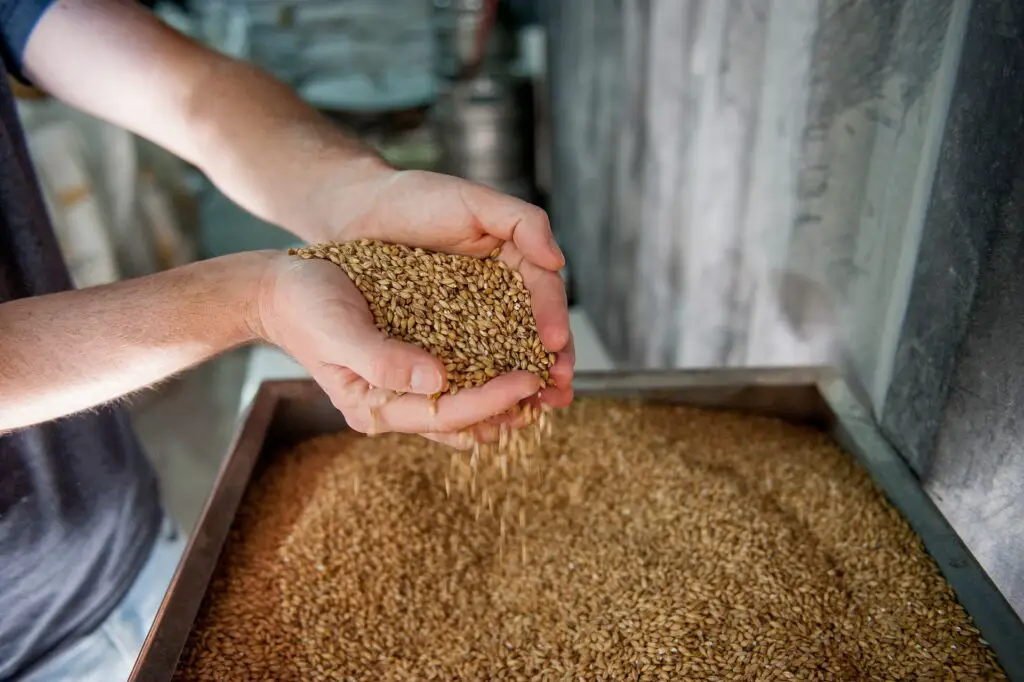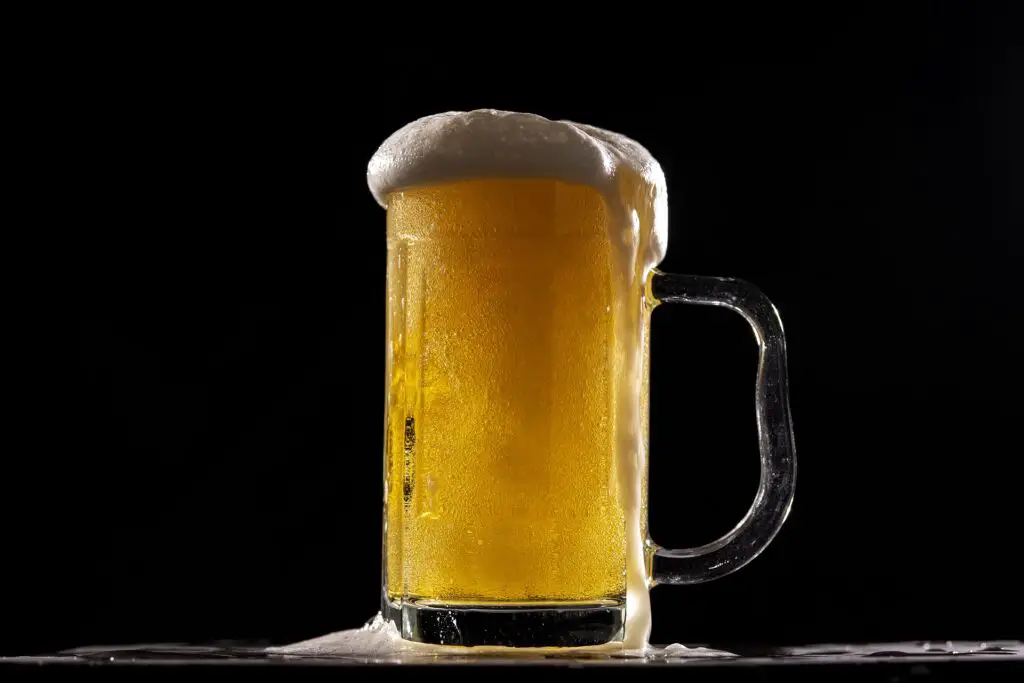
Have you ever homebrewed a tasty beer but something just wasn’t quite right? I brewed myself a delicious amber beer and it turned out great, but it felt a bit thin, and the foam just faded far too quickly.
Dextrin malt processing converts starches to dextrin. Dextrin is a complex carbohydrate that cannot be metabolized by brewers yeast. This results in greater body, mouthfeel and head retention. Replace ~5% or less of your base grain. Carafoam and Carapils are examples of dextrin malt.
Dextrin seems like the answer to all the problems that homebrewers face. It seems almost like magic, but as with anything it can sometimes be too good to be true. There are times when you will need to add dextrin malt and times where you wont. Read below to find out more.
Dextrin Malt to Increase Body, Mouthfeel, and Head Retention
Dextrin Malt is specifically formulated to be indigestible to yeast. It’s main purpose is so homebrewers can get body and head retention from their beer.
Dextrin malt should not be used for all styles of beer. Styles that are already rich in proteins or highly hopped may show no affect or very little. This is because proteins and hops aid in head retention and add more body to a beer.
Dextrin malt is an important ingredient if you are brewing a lighter beer with lower IBU’s. Since head retention and body will usually be a problem with these styles. It is beneficial to add to these types of beers since most types of dextrin won’t affect the taste in any way. Although some dextrin malts will add a small amount of sweetness.
Reasons to Add Dextrin Malt
- You are brewing a lager. Lagers tend to be very thin and lightly hopped, so adding dextrin will boost body and head retention.
- You want to avoid oils from oats with beers like an Amber ale, but still want improved body and foam. Oats will also give the beer a silky smooth feel which isn’t something you want with all beer styles.
- You want to improve head retention and body without altering the flavor. Carapils won’t add additional flavor, but others add a slight amount of sweetness.
Brulosophy did an experiment on with Carahell a dextrin malt. He used lager yeast and found a notable difference in head retention. There was not a perceptible change in flavor which is great for adding to your existing recipe’s with poor head retention.

Reasons to Avoid Dextrin Malt
- You are doing a step mash and creating longer chain sugars and more difficult sugars for yeast to digest.
- You are using a high protein malt or adjunct, like flaked barley, oats or wheat.
- You have a lot of hops and a high IBU beer. Hops actually help with head creation and retention.
- You would rather use other methods to add body and retain head other than dextrin. This is what I mean by dextrin not being necessary for some styles. For example, flaked oats, wheat or flaked barley might be an option for stouts or any heavier beers.
Hopefully, I have saved you a bit of money if you have been adding dextrin malt when you don’t really need it. If you are curious about a situation where it makes no difference Brulosophy did a great xbeeramint on it.
Beer Styles That May Not Need Dextrine Malt
- India Pale Ale
- Stouts
- Wheat Beer
The main reason these don’t need dextrin malt is because they already have a large number of foam positive proteins that also contribute to body. Like hops, wheat, and oats. This is by no means an exhaustive list but rather to give an example.
What are Carafoam, Carapils and Other Dextrin Malts?
Dextrin malt comes in many varieties. All of them seem to be proprietary and some companies have even tried to trademark their names. Nearly all processes are a closely guarded secret so its hard to know how its actually created.
What we do know, is that dextrin malt creation is much like crystal or caramel malt creation. The sugars within the grains are crystalized and glassy.
The main difference between dextrin malts is they contribute little to no flavor. One reason is because the mallard reaction is not taking place, a process that ads caramel and toasty flavors.
Examples of Dextrin Malts
The below links are affiliate links for Adventures in Homebrewing. If you decide to add dextrin malt to your next homebrew consider using these links. Thanks!
- Carapils– Contributes nothing to flavor but adds body and head retention.
- Carafoam– Sometimes said to ad sweetness but still very low amounts.
- Carahell– This is considered a dextrin malt or a light caramel malt, ads sweetness and color.
- Dextrin Powder (maltodextrin)- Made from corn, adds body and mouth feel but does not likely aid in foam retention. This is because of its lack of proteins.
I may have missed some but any type of dextrin malt will in the end achieve the same outcome.
Dextrin Malt is Not Caramel Malt
The main purpose of dextrin malt is to add body and head retention without altering the final color or flavor of a beer. Dextrin is said to retain more proteins and sugars than your base malt would.
Caramel malt by contrast does alter color and flavor. However, it also is said to add body and aid in head retention. According to Briess, the manufacturer of Carapils malt, dextrin malt is distinctly different from caramel malt because the starches have been converted to dextrines. Caramel malts by contrast have higher levels of fermentable sugars.
Which puts me in a tricky spot with an Amber ale that does not have great head. The question is whether or not dextrin malt would help in head retention, I think at the end of the day it wouldn’t hurt to try.
My theory with the Amber is I don’t have enough hops and proteins in my Amber ale which would work with the crystal malts to achieve better head retention. Dr Tanknstien has a very informative article on how dextrin aids in foam retention but only if bubbles are already present.
So its likely that either more carbonation or proteins alongside dextrin malts will result in a glorious and long lasting head.
Using Dextrin in Extract Brewing
When it comes to using dextrin in extract brewing it is actually highly recommended. This is because a lot of extract beers tend to come out a bit thin.
For extract brewing it is better to use dextrin powder for better utilization. Dextrin malts only get about 20 percent utilization when being steeped. Thus you are wasting some cash using it to build body in an extract brew.
However, Dextrin powder does not have many proteins as its made from corn, so you will build body, but it is unlikely to aid in head retention. So if you are looking for more head retention 20 percent utilization might be worth it for you.
Dextrin and Diastatic Power
There has been some talk online about Dextrin malt having poor diastatic power. Which means that it is difficult for starches to be converted into sugars.
This has led many to be afraid of steeping dextrin malt by itself. I think this confusion may be becoming from the poor utilization. It however should have nothing to do with diastatic power.
The reasoning behind diastatic power not being an issue is because Briess has stated that starches have already been converted into sugars. This means there is no need for any diastatic power. This point is also moot if you are mashing, since the other grains will lend a hand.
One thing is for sure though, this is why you should never entirely replace your base 2 row grain with dextrin malt, its also something to consider when going over 5% of your grain bill.
